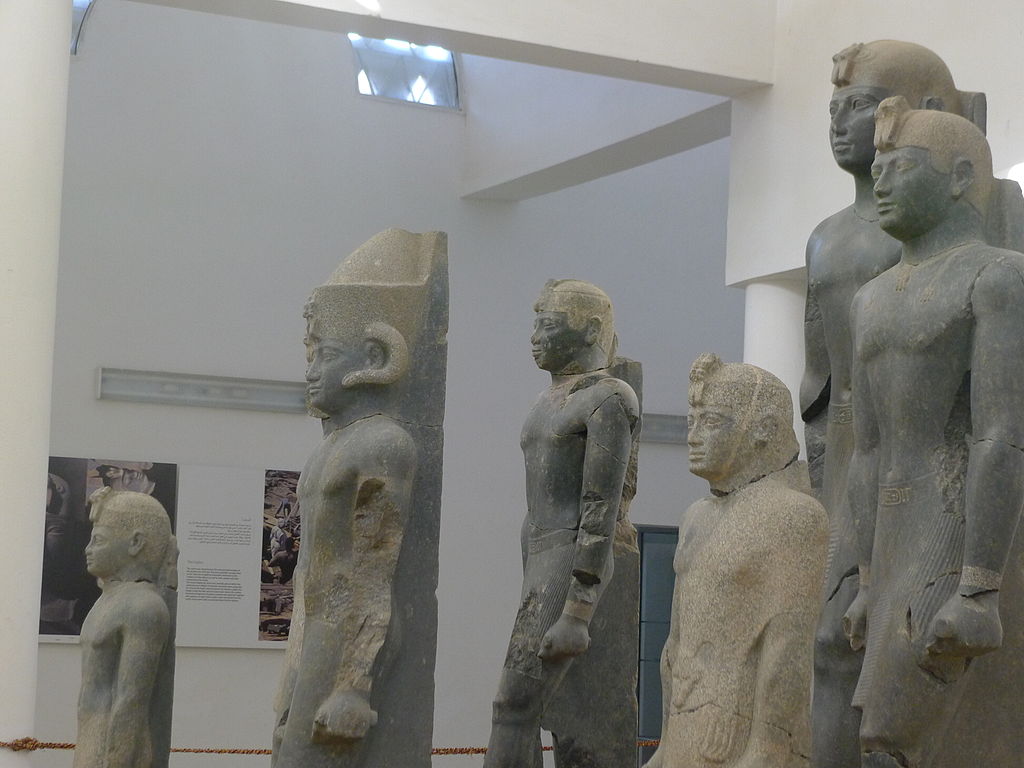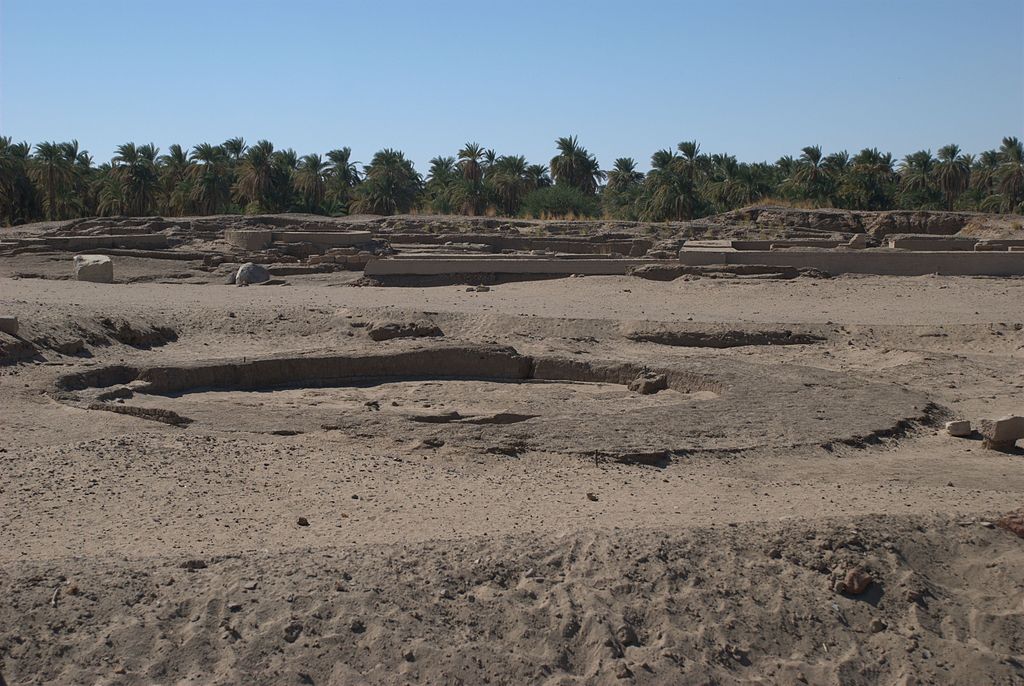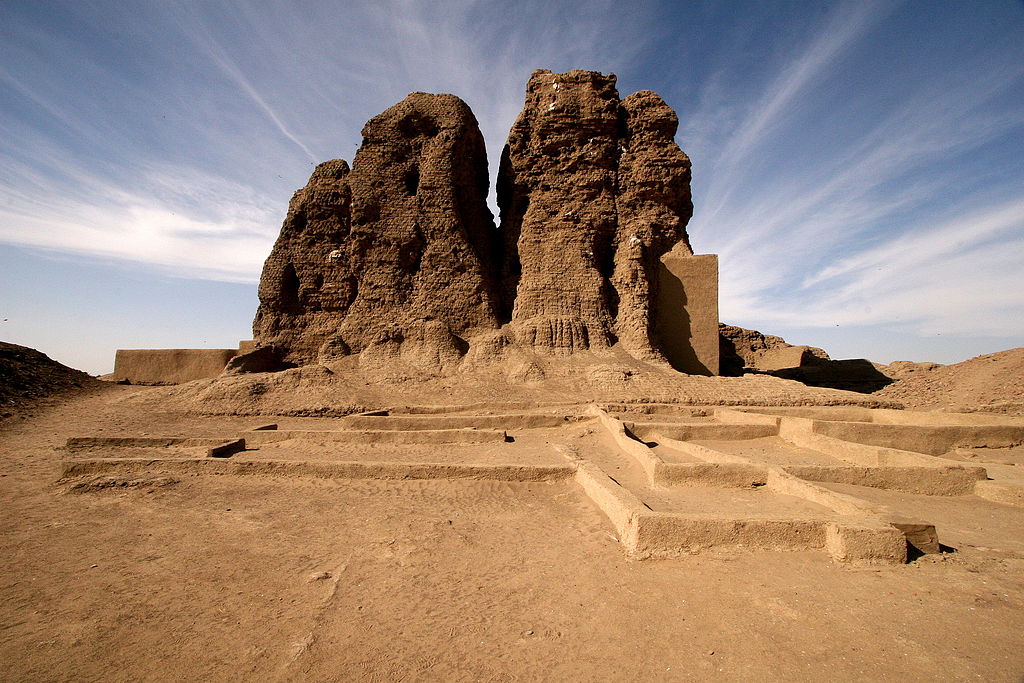Kerma
Kerma (also known as Dukki Gel) was the capital city of the Kerma culture, which was located in present-day Sudan at least 5500 years ago.[1][2] Kerma is one of the largest archaeological sites in ancient Nubia. It has produced decades of extensive excavations and research, including thousands of graves and tombs and the residential quarters of the main city surrounding the Western/Lower Deffufa.
Around 3000 BC, a cultural tradition began around Kerma. It was a large urban center that was built around a large adobe temple known as the Western Deffufa.[1]
As a capital city and location of royal burials, it sheds light on the complex social structure present in this society.
Settlement periods
- Pre-Kerma (c. 3500–2500 BC) No C-Group culture Phase
- Early Kerma (c. 2500–2050 BC) C-Group Phase Ia–Ib
- Middle Kerma (c. 2050–1750 BC) C-Group Phase Ib–IIa
- Classic Kerma (c. 1750–1580 BC) C-Group Phase IIb–III
- Final Kerma (c. 1580–1500 BC) C-Group Phase IIb–III
- Late Kerma – ‘New Kingdom’ (c.1500–1100? BC) ‘New Kingdom’[3][4]
Kerma and its artifacts
By 1700 BC, Kerma was host to a population of at least 10,000 people.[5] Different to those of ancient Egypt in theme and composition, Kerma's artefacts are characterized by extensive amounts of blue faience, which the Kermans developed techniques to work with independently of Egypt,[6] and by their work with glazed quartzite and architectural inlays.[7][8]
Kerma contains a cemetery with over 30,000 graves. The cemetery shows a general pattern of larger graves ringed by smaller ones, suggesting social stratification. The site includes at its southern boundary burial mounds, with four extending upwards of 90 metres (300 feet) in diameter. These are believed to be the graves of the city's final kings, some of which contain motifs and artwork reflecting Egyptian deities such as Horus. Generally, influence from Egypt may be observed in numerous burials, especially with regards to material evidence such as pottery and grave goods. For example, Second Intermediate Egyptian ceramics from Avaris, such as Tell el-Yahudiyeh Ware, have been discovered within Kerma burials.[9] In addition, artifacts such as scarab seals and amulets are prolific, indicating extensive trade with ancient Egypt as well as an exchange of cultural ideas.[9] After the sacking of Kerma, the cemetery was used to host the kings of the 25th or "Napatan" dynasty of the Kingdom of Kush from Upper (Southern) Nubia.
Archaeology
From 1977 to 2003, Bonnet and an international team of scholars excavated at Kerma. "Bonnet and his colleagues unearthed the foundations of numerous houses, workshops, and palaces, proving that as early as 2000 BC Kerma was a large urban center, presumably the capital city and a burial ground of the kings of Kush”.[12]
Bonnet’s Swiss team has excavated the following types of sites at Kerma: ancient town, princely tomb, temple, residential/administrative buildings, Napatan buildlings, Napatan potter’s workshop, Meroitic cemeteries, fortifications, and Neolithic grain pits and huts. Among many other unique finds, Bonnet uncovered a bronze forge in the Kerma main city. “It is within the walls of the religious center that a bronze workshop was built. The workshop consisted of multiple forges and the artisans’ techniques appear to have been quite elaborate. There is no comparable discovery in Egypt or in Sudan to help us interpret these remains"[13]
In 2003, black granite statues of pharaohs of the Twenty-fifth Dynasty of Egypt were discovered near Kerma by Charles Bonnet and his archaeological team.[14][15][16] The statues are displayed on site in the Kerma Museum.
Read more: https://en.wikipedia.org/wiki/Kerma
Kerma Museum
The Kerma Museum is an archeological site museum located in front of the Western Deffufa on the archaeological site of Kerma, in the Northern State of Sudan.
This page uses materials from Wikipedia available in the references. It is released under the Creative Commons Attribution-Share-Alike License 3.0.
References



